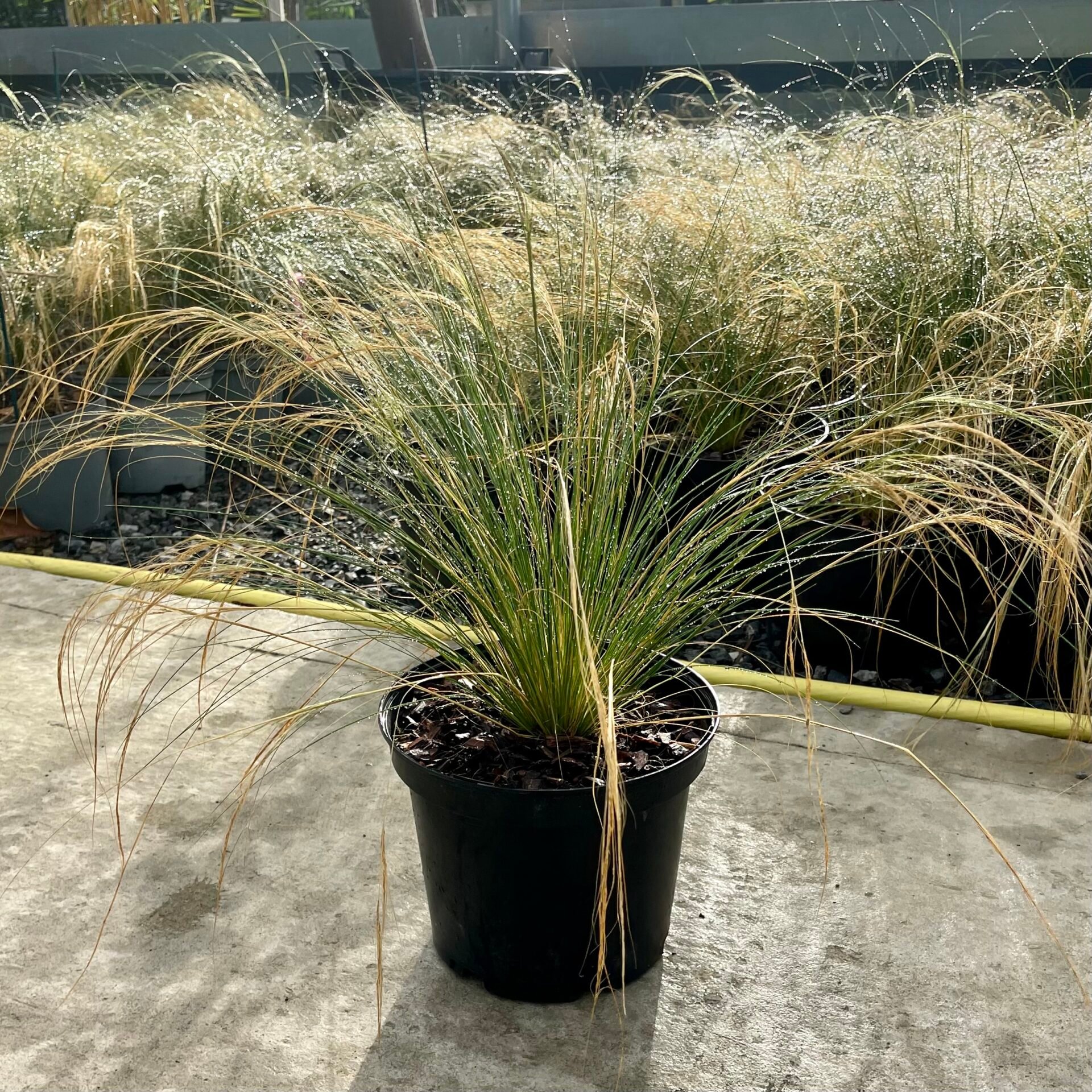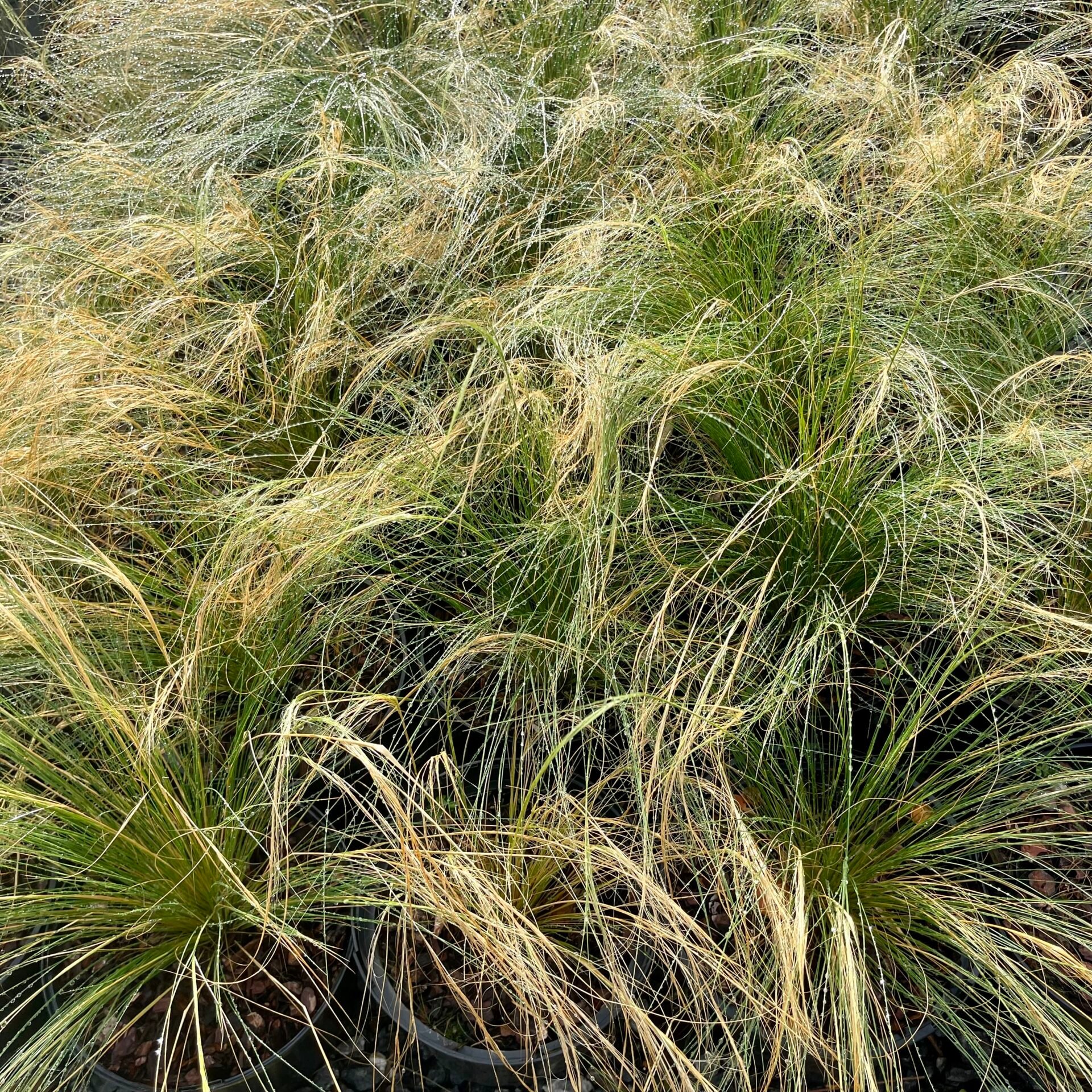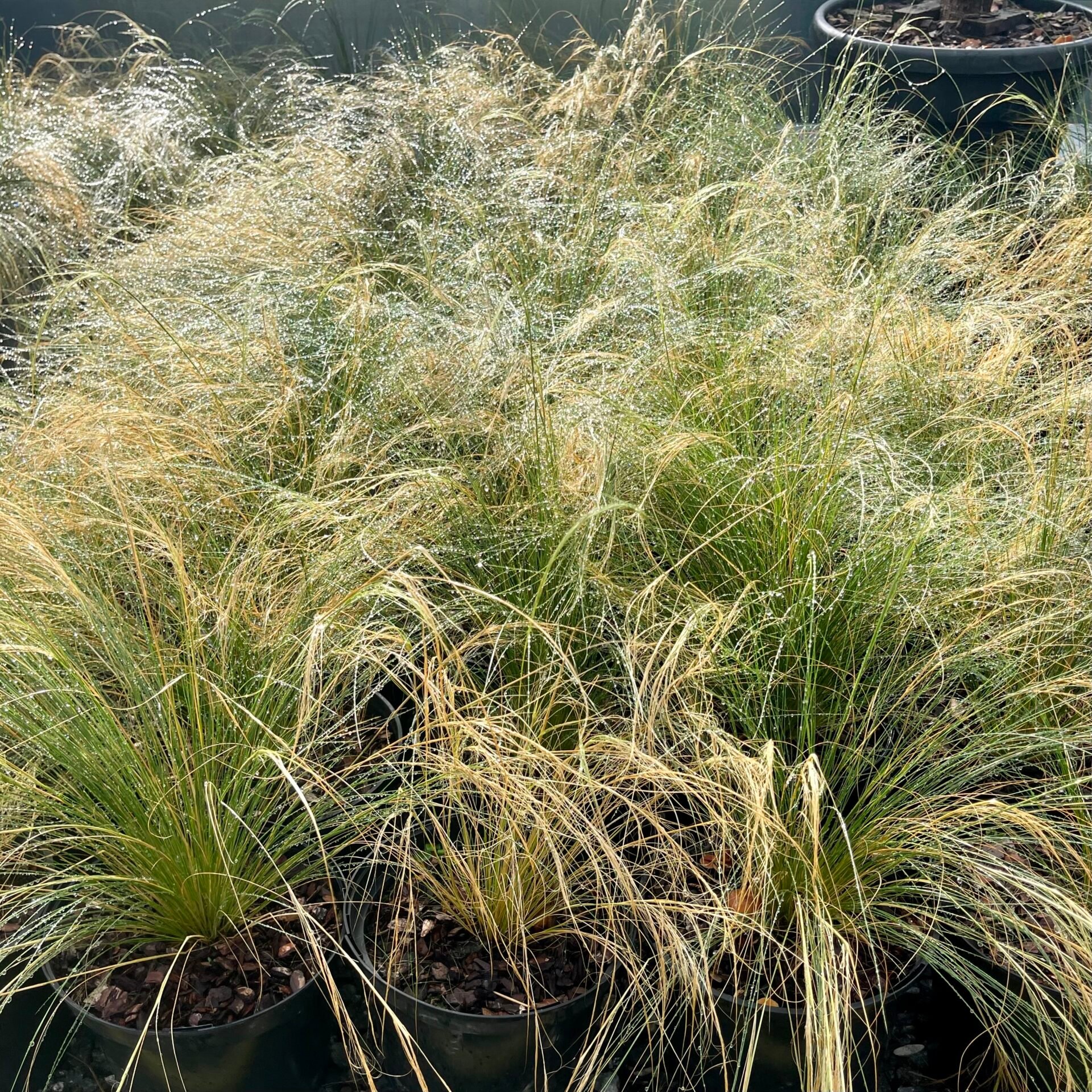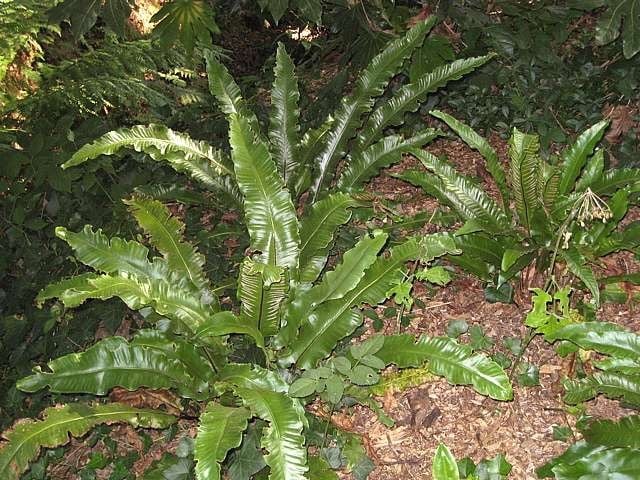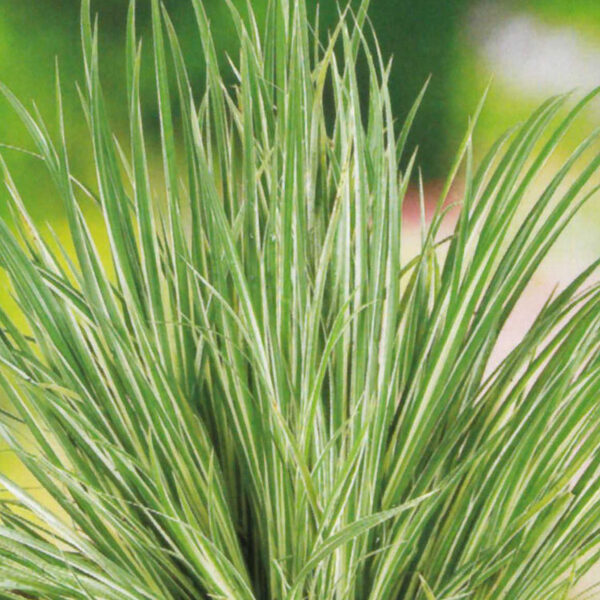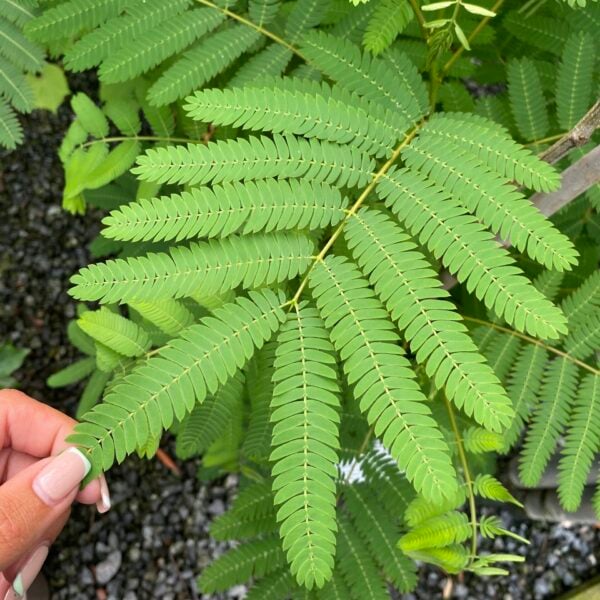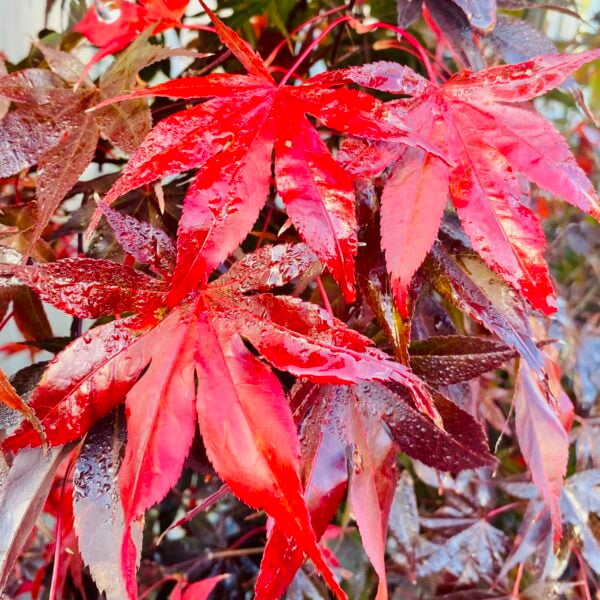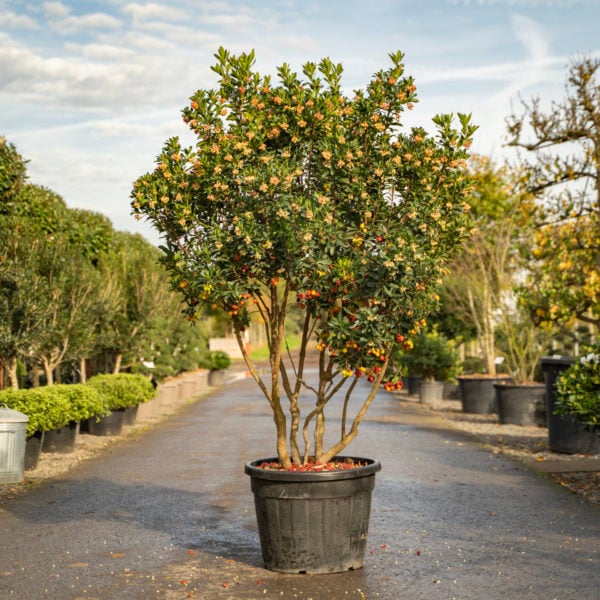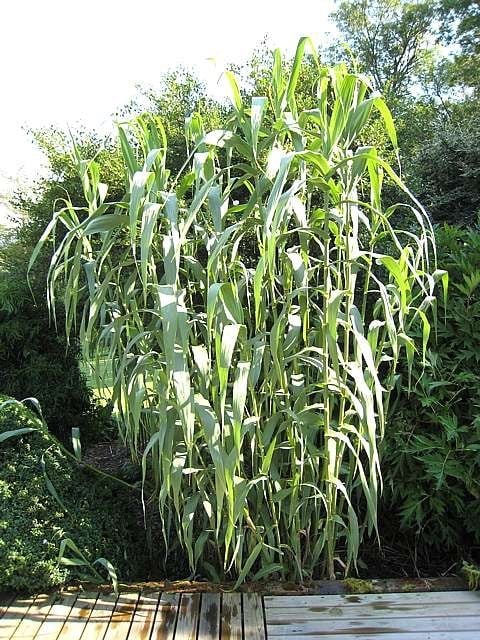Stipa tenuissima (Mexican Feather Grass)
£16.50 incl. VAT
It’s short and green and whispy and must be planted in large quantities in a very light and well ventilated garden so it can be seen waving in the wind. To 1ft. Please contact us for stock availability and sizes.

Hardiness level Green
If it's a waver you want, this is your man. Or your woman. Or your person. It really deserves to be grown en masse on fairly well drained soil with masses of light. It grows to less than 2ft and it's very very fine - hence the tendency to wave beautifully in even the lightest airs.
From various parts of America (U.S.A., Mexico and Argentina), it's pale green and it dies down in the winter (best to chop to the ground in late winter) and produces flowers that are as fine as its leaves and only a little bit higher.
Remember the waving wheat fields in the scenes in 'Gladiator' when Maximus Decimus Meridius (commander of the armies of the north, father to a murdered son, husband to a murdered wife and I WILL have my vengeance in this life or the next etc etc) imagines visiting his farm and his family? Well, it's like that.
Presumably a Hollywood allusion to the Elysian Fields. Plant Stipa tenuissima and create Elysium.
They are comparatively short lived grasses and will last around 3-5 years. They have a similar life span to Lavenders.
Propagated by us by division.
Additional Information |
|
|---|---|
| Size | |
| Soil Type | |
| Light | |
| Plant Type | |
| Continent of Origin | |
| Specialist Plants | |
| Features | |
| Situation | Coastal, Exposed (To wind and sun), Mild City Gardens, Plants for Pots, Seaside, Sheltered Garden |
| Hardiness | |
FAQs
How fast does Stipa tenuissima grow?
1 ft each year.
How do you take care of Stipa tenuissima?
It really deserves to be grown en masse on fairly well drained soil with masses of light. Plant tenuissima in full sun and well-drained soil. Comb through in spring or early summer to remove any dead growth. It dies down in the winter (best to chop to the ground in late winter) and produces flowers that are as fine as its leaves and only a little bit higher. It’s comparatively short-lived and will last around 3-5 years. There’s no need to feed or mulch Stipa tenuissima – it does best in poorer soils. Stipa tenuissima is good for a coastal garden and also grows very well in pots as well.
How tall does Stipa tenuissima grow
1ft to 2ft. 2ft being its very maximum - if you’re lucky.
Do Stipa tenuissima prefer sun or shade?
Full sun.
Is Stipa tenuissima an indoor or outdoor plant?
Outdoor.




